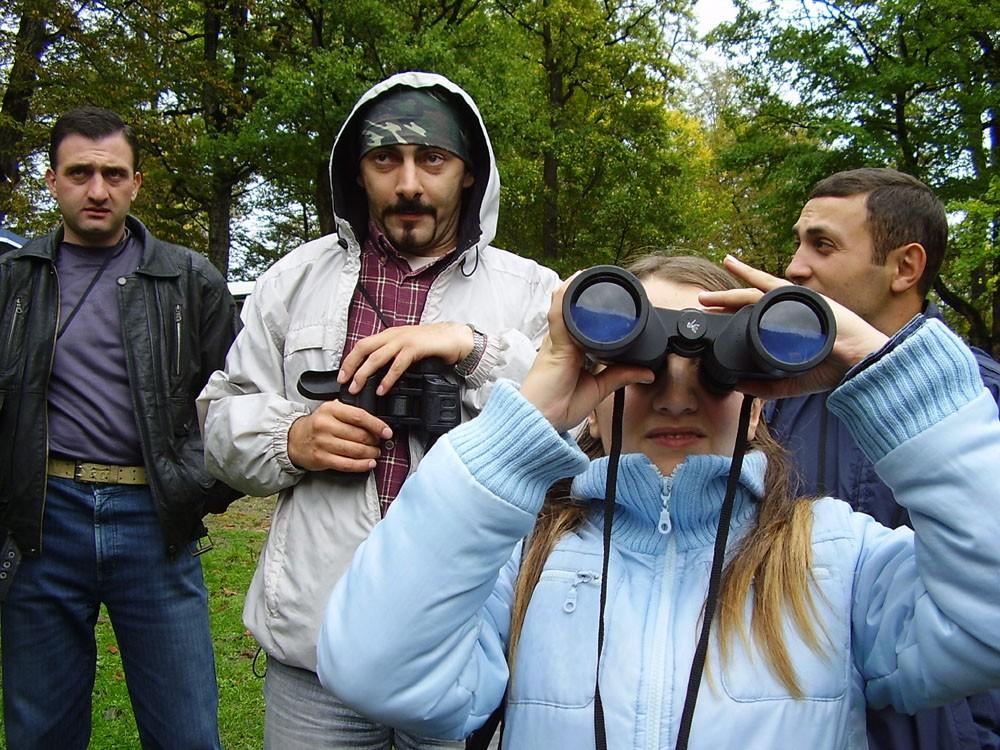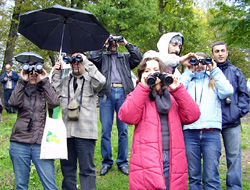
Binoculars Are Replacing Shotguns
Though it may not be among the service offered by most Armenian tour agencies, there is a type of tourism that caters to those who are ready to come to Armenia and climb hills and mountains to see species of birds that don't exist anywhere else in the world. Bird tourism, which originated in Great Britain, is growing in Armenia.
Bird tourists in Armenia hope to see the Red-tailed Wheatear, the Semi-collared Flycatcher, and some 350 other species. The plumage and songs of these birds may not be as spectacular as their names suggest, but that doesn't bother the birdwatchers.
"For bird watchers it is interesting to see and recognize as many species as they can. This is how they gauge their level of knowledge. They have a list of birds that they want to see. It's a sort of competition. They compete with each other on who has seen more birds, who has encountered the most rare species, and where. I know one family where the husband was jealous because he wanted to see one of the species that his wife had already seen,” said Karen Aghababyan, senior researcher at the American University of Armenia's Birds of Armenia Project.

Armenia has species of birds that are unique, and for bird watchers this is a valid reason to spend their vacations here. The only obstacle is finding a guide. There are only two or three guides in Armenia that can provide services to birdwatchers, but the demand is much greater than that.
 "By 2002 we were ready to train at least two people from the regions, so that they could plan a tour in their area and guide bird watchers. But they weren't interested. I don't think they realized that this work could have been not only very interesting, but also very monetarily rewarding. Now we plan to create bird watching clubs in Dilijan and Martuni. Maybe this will jumpstart the development of bird tourism in these regions, " Aghababyan said.
"By 2002 we were ready to train at least two people from the regions, so that they could plan a tour in their area and guide bird watchers. But they weren't interested. I don't think they realized that this work could have been not only very interesting, but also very monetarily rewarding. Now we plan to create bird watching clubs in Dilijan and Martuni. Maybe this will jumpstart the development of bird tourism in these regions, " Aghababyan said.
As he explains it, there are several potential obstacles to the development of bird tourism in Armenia. These are illegal hunting, the use of pesticides, and logging. These practices destroy birds' habitats and threaten their way of life, and as a result some species disappear.
 This year Karen Aghababyan guided one group of eleven birdwatchers from Great Britain who had come here for a week to see several species of birds. The tour started in Georgia and ended in the parks of Yerevan, which also have species that interest birdwatchers. In one week they managed to see over 200 species. The last month of spring and the beginning of summer are especially good for bird tourism. The most interesting species live in the Ararat plain, in the semi-desert areas of Meghri and Yeghegnadzor and in the forests of Dilijan.
This year Karen Aghababyan guided one group of eleven birdwatchers from Great Britain who had come here for a week to see several species of birds. The tour started in Georgia and ended in the parks of Yerevan, which also have species that interest birdwatchers. In one week they managed to see over 200 species. The last month of spring and the beginning of summer are especially good for bird tourism. The most interesting species live in the Ararat plain, in the semi-desert areas of Meghri and Yeghegnadzor and in the forests of Dilijan.
To help develop this type of tourism, the Birds of Armenia Project has published three books, two of them guide books and the third with a scientific focus. They also offer nine-month courses for anyone who is interested in learning more about Armenia's birds.
 Videos
Videos Photos
Photos
Write a comment